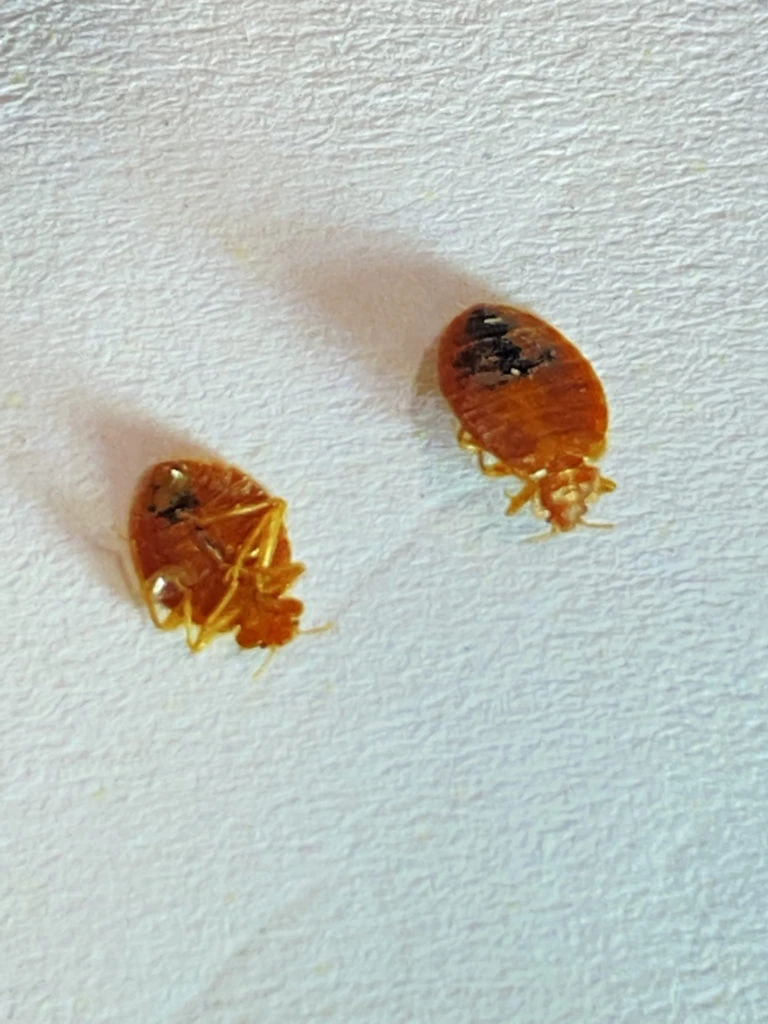How to Identify a Bed Bug
I often hear people ask, “What kind of spider is this?” The reason they want to know is usually to obtain peace of mind. They really want to know whether or not that spider is a threat. Comparatively, the story with bed bugs is often quite different. Being able to identify a bed bug properly is just as important and can be just as technical. Here are the steps to identifying a bed bug.

Bed Bug Identification Steps & Process

- Fecal flakes – bed bug poop looks a lot like pepper. If you have pepper showing up in your bed or along seams of baseboards/walls/ceilings, you should be suspicious
- bed bug eggs – sticking with the food theme to ruin your appetite, think tiny grains of rice.
- Blood smears – little smears or splatters of blood on sheets or the mattress that aren’t explained by a bloody nose or similar are worth looking into.
- Cast skins – bed bugs molt and leave behind the outer shells of there prior shape and size.
- Bites – It is important to understand that a bite itself cannot be linked by characteristics to its source. Different people react differently (or not at all for some) to different stimuli. Some people will get welts that look like bites, but they are reactions to allergens. If bites consistently appear after sleeping and you can rule out mosquitoes from your sleeping quarters and the bites appear in linear groups rather than one at a time, it is worth looking for more direct clues.
- Along mattress and box spring seams
- Behind head boards and bed frames
- In wheels, zippers, and other small places
- In boxes and cardboard corrugation
- Behind baseboards, picture frames, and other things attached to the walls
- Underneath, inside, and behind electronics
- In furniture other than beds where people spend significant amounts of time resting with little motion
- Look for clues – Keep in mind that bed bug clues are just that. They are clues. Moreover, a single clue alone may not be enough to make a conclusion, but they are things that tell us to continue exploring. Clues that bed bugs may be around include
- Fecal flakes – bed bug poop looks a lot like pepper. If you have pepper showing up in your bed or along seams of baseboards/walls/ceilings, you should be suspicious
- bed bug eggs – sticking with the food theme to ruin your appetite, think tiny grains of rice.
- Blood smears – little smears or splatters of blood on sheets or the mattress that aren’t explained by a bloody nose or similar are worth looking into.
- Cast skins – bed bugs molt and leave behind the outer shells of there prior shape and size.
- Bites – It is important to understand that a bite itself cannot be linked by characteristics to its source. Different people react differently (or not at all for some) to different stimuli. Some people will get welts that look like bites, but they are reactions to allergens. If bites consistently appear after sleeping and you can rule out mosquitoes from your sleeping quarters and the bites appear in linear groups rather than one at a time, it is worth looking for more direct clues.
- Locate harborage sites – Bed bugs are efficient creatures that like to hang out close to their food source. There are exceptions to this such as hitchhiking to better feeding grounds and females fleeing from traumatic inception, but bed bugs feeding means there are bed bugs lurking nearby. Common places they may hide out include:
- Along mattress and box spring seams
- Behind head boards and bed frames
- In wheels, zippers, and other small places
- In boxes and cardboard corrugation
- Behind baseboards, picture frames, and other things attached to the walls
- Underneath, inside, and behind electronics
- In furniture other than beds where people spend significant amounts of time resting with little motion
- Capture a specimen and have it identified. The difference between a bed bug and a bat bug (or swallow bug or other look-a-like species) requires analysis of the hairs under magnification. If the specimen is a bat bug, the treatment process must focus on solving the bat presence rather than conventional or innovative bed bug treatments.

Solving the riddle or the presence
Whether you are stuck trying to figure out what is robbing you of your sleep and/or peace of mind or trying to resolve what has been identified, the biting insect specialists at Rove Pest Control are here to help with everything from a to zzzz’s.
